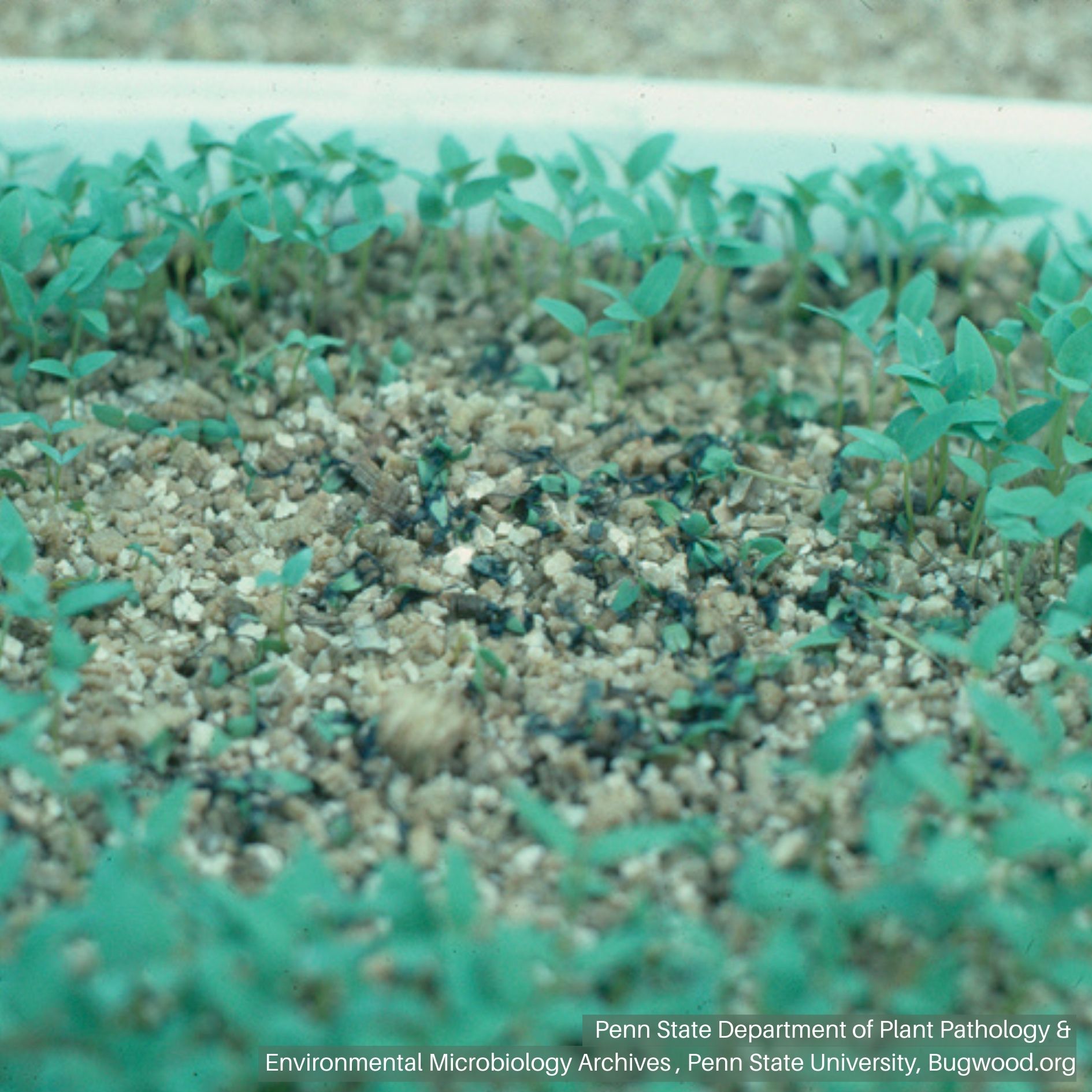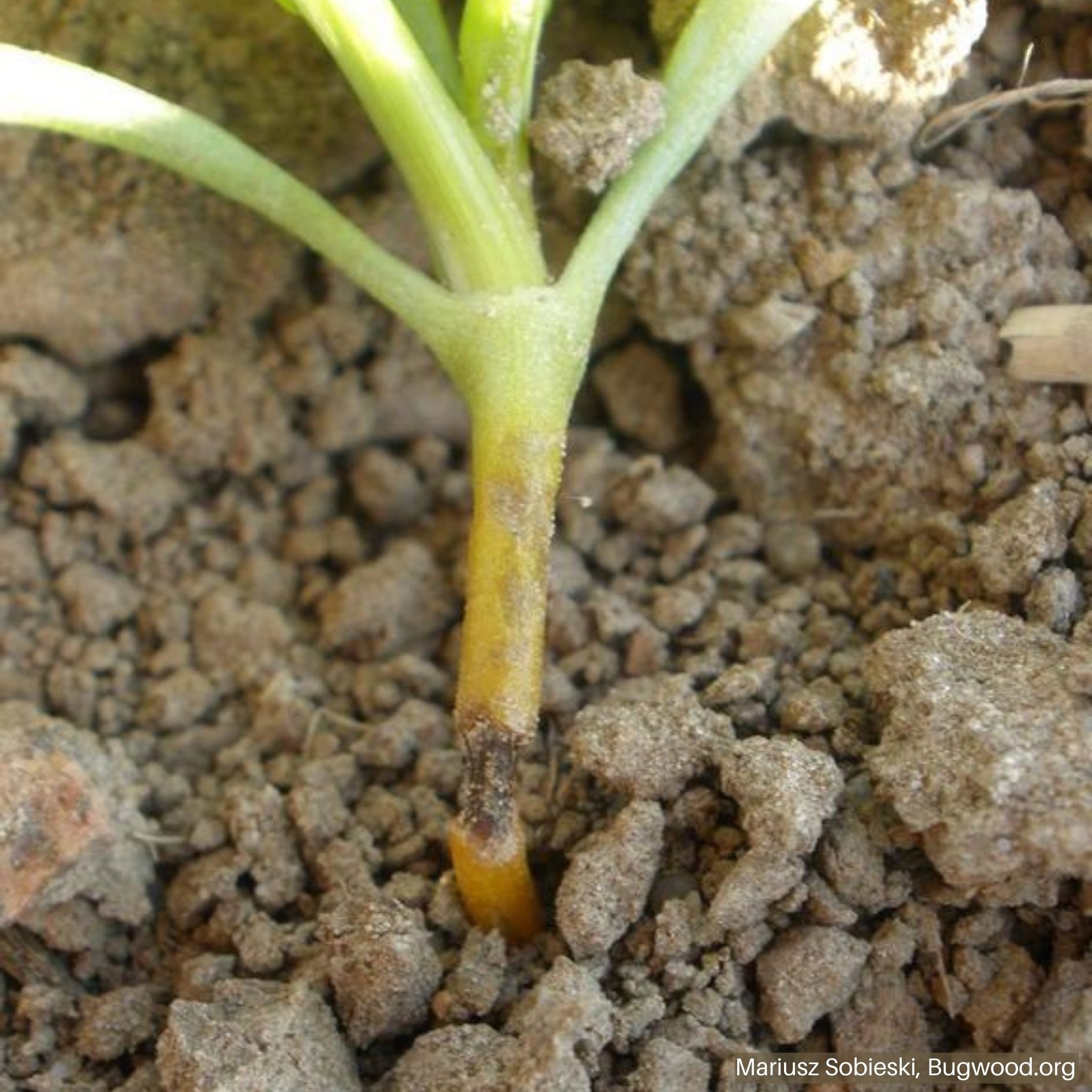Damping-Off
 Damping-off in pepper seedlings.
Damping-off in pepper seedlings. Beet seedling with blackened lower stem.
Beet seedling with blackened lower stem. Seedlings with damping-off symptoms.
Seedlings with damping-off symptoms. Chard seedlings with symptoms of damping-off.
Chard seedlings with symptoms of damping-off.HOSTS
- Brassicas
- Corn
- Cucurbits
- Leafy Greens
- Legumes
- Onions and Garlic
- Potato
- Root Crops
- Solanaceae
DESCRIPTION
Damping-off is caused by several soilborne organisms including Pythium, Rhizoctonia, Fusarium and Phytophthora species. The pathogens kill seedlings that are germinating and seedlings that have been growing for several days.
BIOLOGY
Pathogens causing damping-off are soilborne and can be found anywhere even small amounts of soil and dirt are left including reused seed trays and benches. Once the seed is planted and watered, spores or mycelium will infect rootlets and stems of plants in the trays. The chance of having an outbreak of damping-off is increased when seedlings are kept very wet. Damping-off pathogens can form survival structures that allow them to persist within debris on dirty greenhouse benches or unwashed pots and trays. As a result, seedlings become infected through openings in the tray bottom.
SYMPTOMS
Symptoms vary depending on time of infection.- Circular bare spots in seed flats due to the death of germinating seeds.
- Pinched, brown or black lower stem.
- Seedlings that tip over.
GENERAL MANAGEMENT
- Disinfect growing benches.
- Disinfect growing containers.
- Source sterile potting mix.
- Avoid excessive irrigation, seedling should not be kept too dry or sit in water for days.
FUNGICIDES
Seed treatments can reduce damping-off incidence. Often seed that is already treated with fungicides can be purchased.

